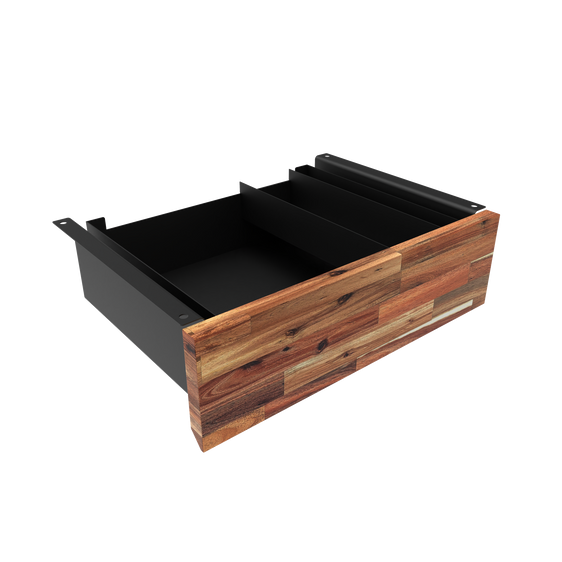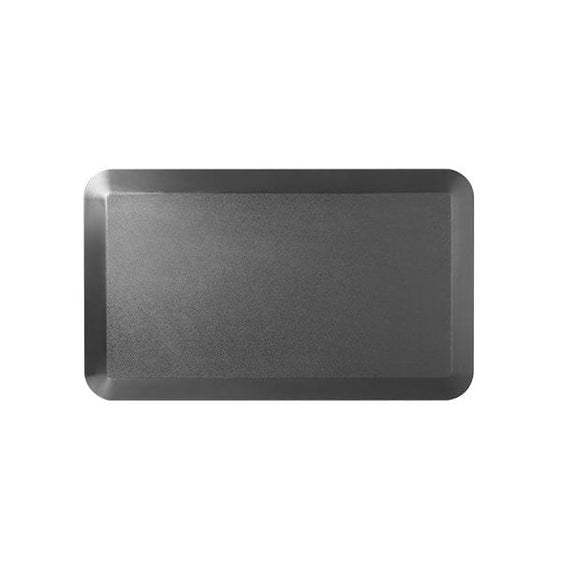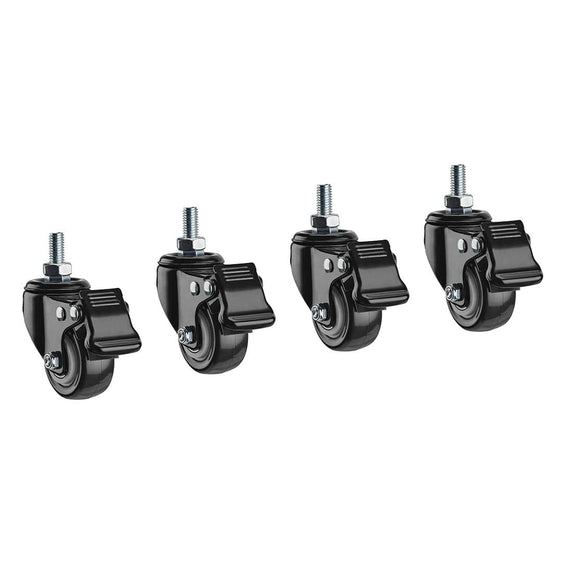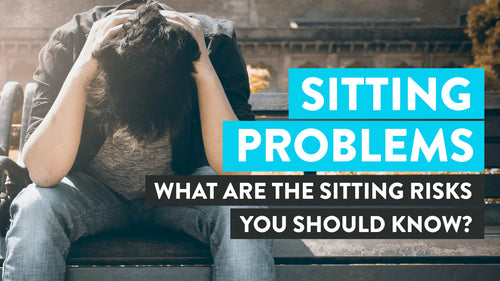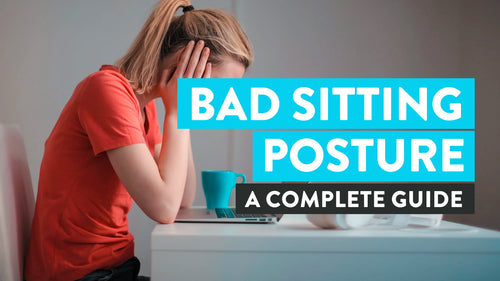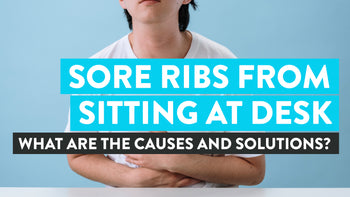
News
Sore Ribs From Sitting at Desk: What Are the Causes and Solutions?
Hayden AdamsAre you working a desk job or working from home?
Neither exempts you from sitting at your desk for a long time.
Your long hours of computer or laptop work and poor posture may be causing pain in your rib area.
Don't panic yet! You're not the only one.
We're here to help you understand the problem, its causes, and some fixes to help relieve your severe pain.
Sore Ribs from Sitting at Desk: Identifying the Problem

First, find out what's causing your pain. Here are some possible causes:
Common Postural Issues Related to Rib Pain
Poor posture happens when the middle back rounds and the chest drops. Slouching at desks is also a factor. But since nearly everybody is sitting badly, it has been considered normal in the past years.
Unfortunately, standing up straight doesn't solve this. Even if that means pushing the shoulder blade up and back and pushing the chin forward. It may even just worsen your muscle and joint pain.
Postural issues affect the mid-back, upper back, neck, and around the shoulder blades. They often cause tense muscles, intervertebral joints, or rib joints.
Worse, they may develop into non-structural scoliosis or sideways spinal curvature. Aside from poor spinal posture, muscles around the spine are compromised here.
Bad posture causes rib flaring as well. Too much slouching or hunching forward can misalign the ribcage. The lower ribs stick out because of this. Women with a wider pelvis and a distinguishable hourglass figure often experience this.
Here's something you might not expect: postural issues cause thoracic pain.
Regular pain and stiffness after too much slouching characterize this. Muscle tension is generally around the thorax or chest, such as the shoulders, neck, and lower back.
Thoracic Pain and its Connection to Rib Pain
You may ask, "How is chest pain connected to rib pain?"
You can feel severe referred rib pain at the sides and front of your chest.
This pain is because of nerve and muscle inflammation at the facet joints of your mid-back or rhomboid muscles. This worsens with inhalation, forced inspiration, lifting, or side bending of the neck, spine, and ribcage.
Identifying Rib Dysfunction
These are the symptoms you should watch out for to confirm your rib pain or rib dysfunction:
- Sharp pain at the sides of your sternum or breastbone
- Deep and stabbing upper chest pain that spreads around the chest wall
- Coughing, laughing, and taking a deep inhalation or exhalation worsen the pain
If you're experiencing a few of the symptoms, you might be suffering from any of the following:
Simple Mechanical Pain
Poor posture can sprain the spinal and rib joints. This causes trigger points and tender spots on the connecting muscles and ligaments.
Nerve Pain
Displaced ribs or bulging discs can put pressure on the nerves between the ribs or in the vertebral column. The pain may worsen with movement and can move along a rib from the upper back to the chest.
A trapped nerve in the neck can also cause pain in the upper back, shoulder, and arm.
Move the pain area and take a deep breath. If it doesn't help, consult a health expert to check for shingles.
Popped Rib or Intercostal Muscle Strain
This is caused by a sudden or unusual movement, strain, or injury. Pain travels along the rib or between the ribs. Taking a deep breath, rotating, or reaching for something only increases the pain.
Osteoarthritis
This happens if the cartilage, the cushioning of the small vertebral joints of the spine, breaks down. You can recognize this with muscle spasms and pain.
Fracture
Fractures in the thoracic vertebrae are because of weak bones. This is more common in the elderly, but it can also happen spontaneously.
Causes of Rib Pain while Sitting at a Desk

After identifying the problem, address its cause. They can be any of the following:
Poor Posture and its Effects on Ribs
Poor posture is common. So are rib pain, middle back pain, referred chest pain, and arm pain.
This may be because of putting your feet in front, leaning back, and working with your screen below eye level.
You round your upper back, drop your chest, jam your shoulders, and stick your chin out with this setup.
If your screen is too far, it creates a forward shearing of the lower neck joints. This compresses the nerves of your lower neck. As a result, you'll experience chronic pain and spasm.
Taller people with looser ligaments also suffer from referred pain between the shoulder blades. They experience pain and spasms between the ribs and around the chest wall. The pain may even move down the left arm.
Repetitive Stress Injuries and Rib Pain
Rib pain can also be intercostal neuralgia, costochondritis, or costo-transverse sprain.
A deep, bruised pain often characterizes their soreness. They can be due to trauma, injury, overexertion, or fall.
Examples include heavy lifting, car accident trauma, and a bad sleeping position.
Prolonged Sitting and Chest Pain
Long periods of having a rounded posture don't only affect your middle thoracic spine. You also have your chest dropping vertically when you have a rounded posture.
Eventually, your chest becomes tight. This explains why you're having chest pain as well.
Many people attempt to correct this by pushing their shoulder blades up and back. However, this loads a huge strain on your supporting muscles and ligaments.
You're only damaging the muscles and joints in your chest, middle back, and neck here.
Underlying Medical Conditions
In some cases, rib pain or chest pain shouldn't be taken lightly. It may be a sign of a more severe medical condition such as GERD or anxiety or the following:
- Gastroesophageal reflux disease (GERD) and heartburn
- Anxiety and other mental health conditions
- Tietze’s syndrome
- Pulmonary embolism
- Pleurisy
- Heart attack
- Lung cancer
Seek the advice of a medical practitioner if your pain is frequent or unbearable. It's always best to be sure!
Prevention and Relief Methods for Rib Pain

How can we solve rib pain, then? These are the ways you can reduce your rib pain:
Effective Exercises for Strengthening Ribs and Mid Back
Exercise is always a good idea. But when it comes to rib pain, you should know which one is best. The key is good posture and strengthening the muscles that support the spine.
Pilates, yoga, and certain workouts help you achieve this.
Choose whichever you're more comfortable with. Go with an exercise you can do regularly. Make sure also to maintain good posture and alignment at all times to prevent injuries.
Adjusting Your Workstation for Better Ergonomics
Changing things up in your workstation can improve your posture and help you work better. This means adjusting your computer and chair.
First, your computer screen must be a little higher than your eye level. On the other hand, you should use a forward-tilting chair with a neck rest. If you can, get a sit-to-stand desk to improve your posture even more.
Once you get used to this setup, you get to enjoy a pain-free posture and better mobility. This should help relieve you from the skeletal muscle issues you're dealing with.
{{ spec_dual_mini_desk }}Daily Habits to Improve Posture and Reduce Rib Pain
Aside from the right setup, you have to make the effort of having the right sitting posture. Your setup is useless if your posture is bad. You may still end up with rib pain, back pain, and neck pain.
If you're sitting for long periods, make the habit of standing up at least every 30 minutes. This should help you counter the bad posture you've developed.
Medical Treatment Options
It may come to the point when rib pain becomes persistent, recurring, and long-term.
You might relieve some of the pain in your spinal joints with non-steroidal anti-inflammatory drugs (NSAIDs), or steroid injections into spinal joints may not be enough.
Fortunately, you still have the following options:
- Chiropractic or Osteopathy Treatment - This involves examining your muscles and joints along with the mobility of your individual ribs and joints. The sessions would depend on your needs and progress.
- Physiotherapy Treatment and Physical Therapy - Both aim to reduce the tension in your lower cervical spine muscles. These include your trapezius muscles, rhomboids, and other postural muscles of your neck and upper thoracic spine.
- Physiotherapy is a more hands-on approach involving releases, stretches, and massages.
- In contrast, physical therapy incorporates an exercise-based approach to the treatment.
- Acupuncture, Dry Needling, and Therapeutic Massage - These treatments intend to provide relief for neck, rib, and middle back pain.
Frequently Asked Questions
The following may further help you with your related pains:
Why Does My Chest Hurt After Sitting at a Desk All Day?
Does a slouching posture or exercise worsen the pain?
You might be suffering from costochondritis. It is the swelling of the cartilage in the joints connecting the ribs to the breastbone. You probably feel the pain on the sides of your breastbone.
Are you having difficulty breathing as well?
Your Zone of Apposition (ZOA) may be reduced. When your rib cage isn't kept in a natural position, your diaphragm can't compress properly. Your abdomen may not contract as much, too. When the affected areas are sore, it often feels like chest pain.
However, it's best to consult with a medical specialist regardless. You must first differentiate your chest pain from the symptoms of a heart attack.
Are There Any Specific Stretches to Relieve Rib Pain From Sitting?
Yes, there are. You can stretch your lateral muscles while you're seated. To do this, simply sit tall and look straight. Lift one arm over your head and bend sideways while you reach your other hand down. Make sure that you don't twist or lean forward as you bend.
There are also other stretches you can do while standing up or lying down.
Can Stress Contribute to Sore Ribs From Sitting at a Desk?
Yes, it does. Stress, anxiety, and other issues can further the pain in your rib area. They often cause chest pain that feels like it's coming from your ribs.
Physical activity can help you with this type of chest pain. It's great for improving posture, and you'll experience less pain.
Can Certain Sitting Positions Prevent Sore Ribs While Working?
Yes, they can. You shouldn't slouch and drive your head and neck forward. Here's what you should do:
- Put your feet flat on the floor and position your knees at a right angle.
- Relax your shoulders and keep your back straight while seated.
- Take breaks. Stand up, stretch, and move around to keep your mobility.
It also helps if you stand tall regularly. This gives you a better posture and strengthens your nervous system.
How Do I Know If My Rib Pain Is Related to a More Serious Condition?
Your rib pain may come with neck pain and frontal chest pain. If you have a fever, severe cough, or breathing difficulties, consult a health expert.
You have to undergo examinations and X-rays to detect mechanical sources of pain. These are the only ways to know whether your pain is related to a more serious issue.
Conclusion
Bad posture combined with prolonged sitting could be why you're having rib pain. Combating this entails adjustments and regular habits.
You should seek lifestyle advice to improve your health and restore mobility. You can improve your self-esteem and posture with the above advice.
Consult with a health expert first to rule out more serious medical conditions.

